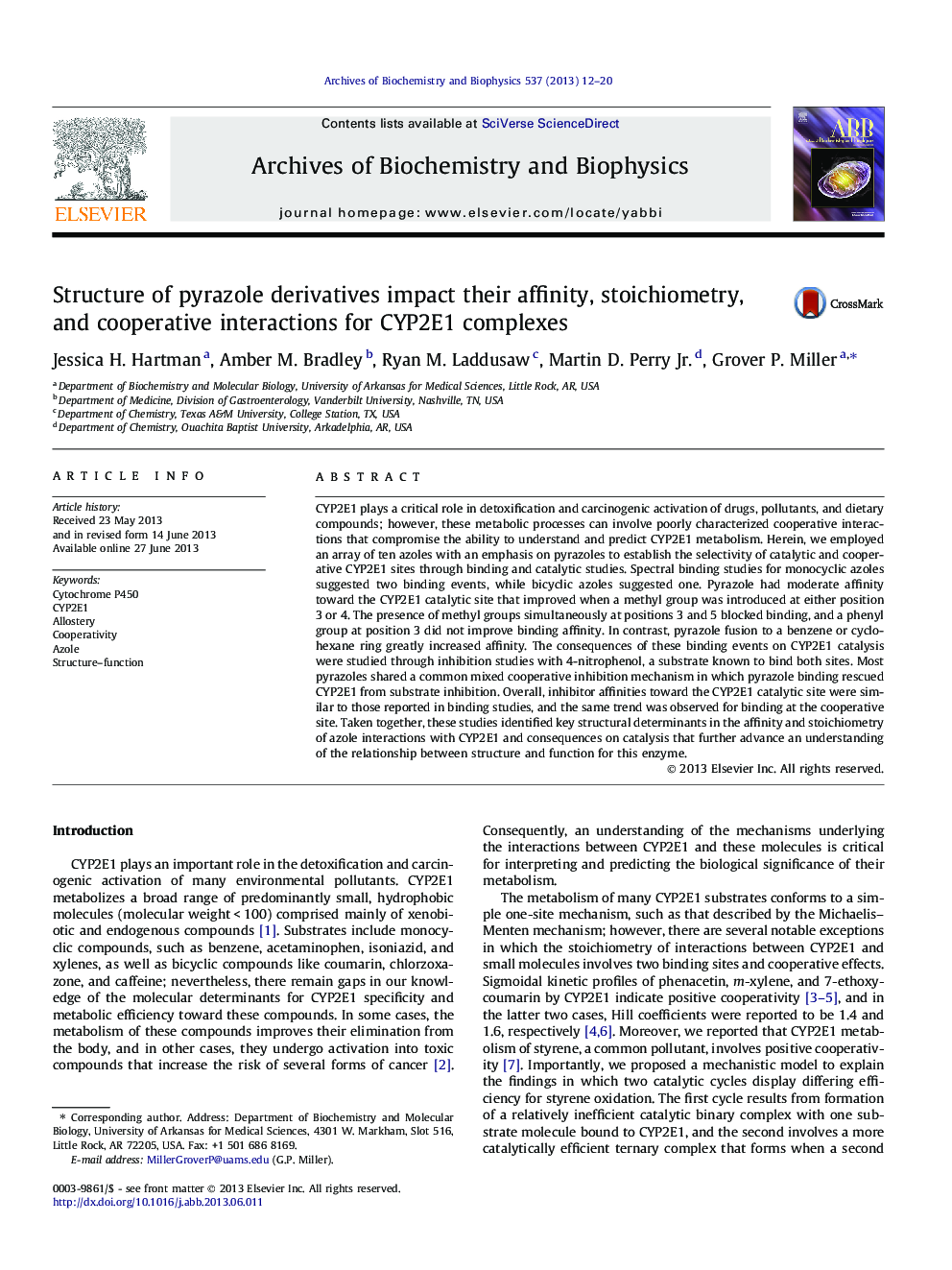| Article ID | Journal | Published Year | Pages | File Type |
|---|---|---|---|---|
| 8290661 | Archives of Biochemistry and Biophysics | 2013 | 9 Pages |
Abstract
CYP2E1 plays a critical role in detoxification and carcinogenic activation of drugs, pollutants, and dietary compounds; however, these metabolic processes can involve poorly characterized cooperative interactions that compromise the ability to understand and predict CYP2E1 metabolism. Herein, we employed an array of ten azoles with an emphasis on pyrazoles to establish the selectivity of catalytic and cooperative CYP2E1 sites through binding and catalytic studies. Spectral binding studies for monocyclic azoles suggested two binding events, while bicyclic azoles suggested one. Pyrazole had moderate affinity toward the CYP2E1 catalytic site that improved when a methyl group was introduced at either position 3 or 4. The presence of methyl groups simultaneously at positions 3 and 5 blocked binding, and a phenyl group at position 3 did not improve binding affinity. In contrast, pyrazole fusion to a benzene or cyclohexane ring greatly increased affinity. The consequences of these binding events on CYP2E1 catalysis were studied through inhibition studies with 4-nitrophenol, a substrate known to bind both sites. Most pyrazoles shared a common mixed cooperative inhibition mechanism in which pyrazole binding rescued CYP2E1 from substrate inhibition. Overall, inhibitor affinities toward the CYP2E1 catalytic site were similar to those reported in binding studies, and the same trend was observed for binding at the cooperative site. Taken together, these studies identified key structural determinants in the affinity and stoichiometry of azole interactions with CYP2E1 and consequences on catalysis that further advance an understanding of the relationship between structure and function for this enzyme.
Related Topics
Life Sciences
Biochemistry, Genetics and Molecular Biology
Biochemistry
Authors
Jessica H. Hartman, Amber M. Bradley, Ryan M. Laddusaw, Martin D. Jr., Grover P. Miller,
